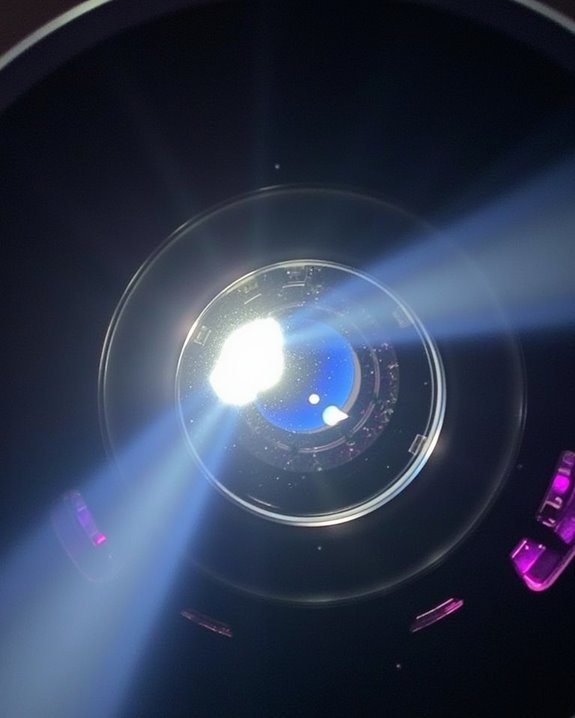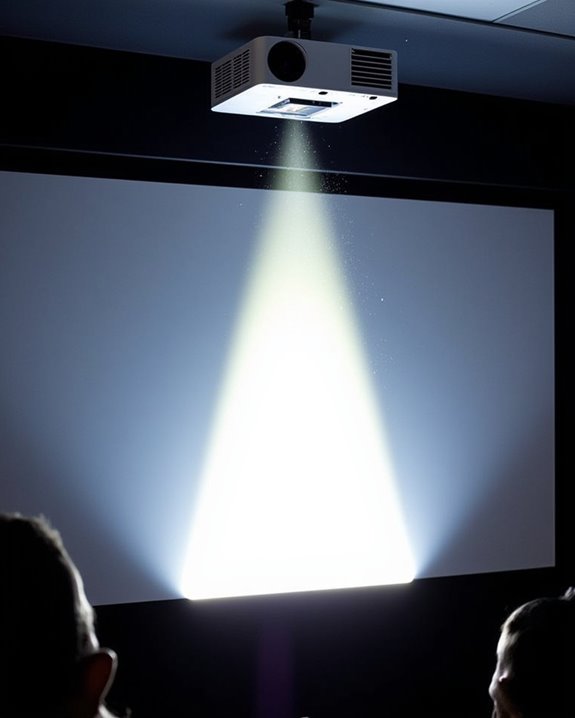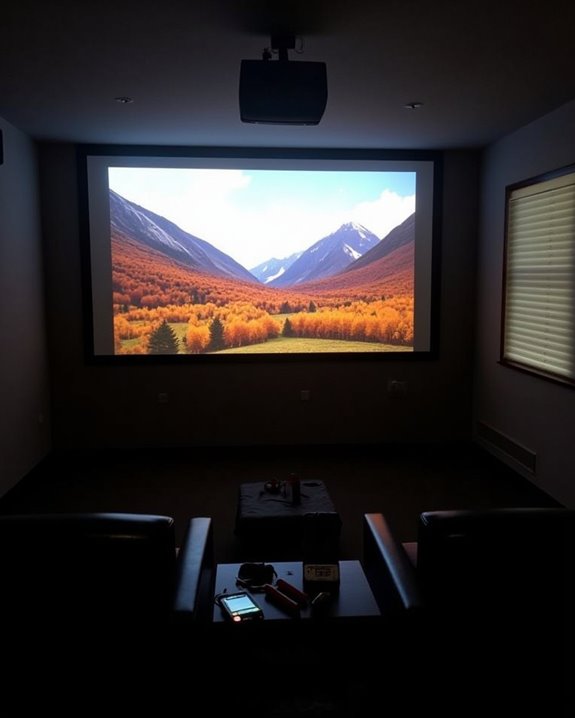When you’re comparing two projectors that seem identical but have different ANSI ratings, you’re looking at a pivotal difference that will affect your viewing experience. ANSI, which stands for American National Standards Institute, provides a standardized method for measuring projector brightness in lumens. Unlike manufacturer-claimed brightness levels, ANSI lumens offer a consistent, reliable measurement taken under specific testing conditions. This standardization helps you determine which projector will perform best in your intended environment, whether you’re presenting in a bright conference room or enjoying movies in a darkened home theater.
Key Takeaways
- ANSI stands for American National Standards Institute, which established the standardized measurement for projector brightness.
- ANSI lumens provide a consistent, reliable way to compare brightness across different projector brands and models.
- The measurement involves averaging brightness readings from nine points across a projected white image.
- Higher ANSI lumen ratings generally indicate better visibility in various lighting conditions.
- ANSI lumens reflect real-world performance rather than theoretical or peak brightness values.
What Is ANSI in Projector Technology?
When you’re shopping for a new projector, you’ll frequently encounter the term “ANSI lumens” in product specifications, but what exactly does this measurement represent? ANSI lumens serve as the industry standard for measuring and comparing projector brightness across different manufacturers, providing a reliable indicator of real-world performance.
This standardized measurement is obtained by projecting a white image onto a screen in a dark room and averaging brightness at nine specific points, simulating actual usage conditions. Higher ANSI lumen ratings generally correlate with better visibility in various lighting environments, though they can affect both power consumption and color accuracy. Understanding ANSI lumens helps you make informed decisions when selecting a projector that balances brightness requirements with other important factors like image quality and energy efficiency. For example, projectors with 1100+ ANSI lumens are recommended for use in well-lit spaces, ensuring clear images even in less-than-ideal lighting conditions.
The Definition and Standardization of ANSI Lumens
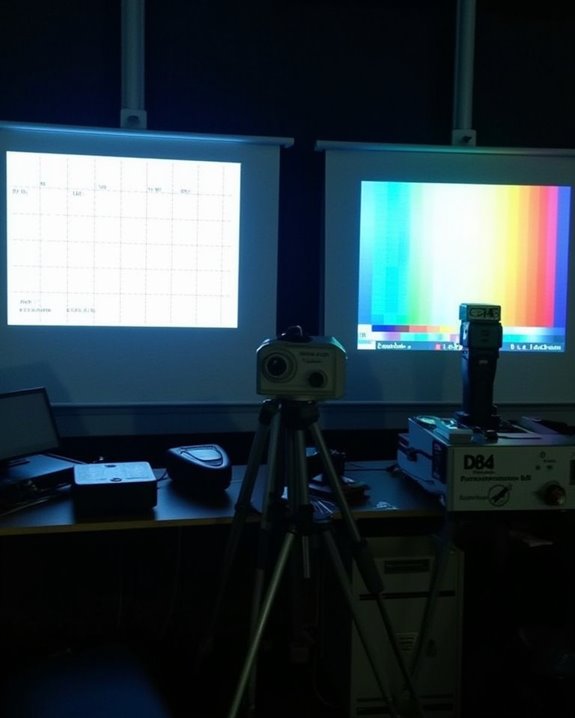
ANSI lumens is a standardized unit of measurement that quantifies the brightness of a projector. It was established by the American National Standards Institute (ANSI) to provide a consistent way for manufacturers and consumers to compare the light output of projectors. The measurement involves projecting a white image onto a screen and taking multiple brightness readings at various points to calculate an average value, expressed in lumens. This standardized approach helps ensure that brightness claims are reliable and comparable across different projector models. Understanding ANSI lumens is crucial for selecting a projector that meets your specific lighting and viewing environment needs. For instance, a projector with around 5000 ANSI lumens is generally sufficient for daytime indoor presentations without complete darkness, providing vibrant colors and daylight visibility. This makes ANSI lumens brightness a key factor in evaluating projector performance.
How ANSI Lumens Are Measured in Projectors
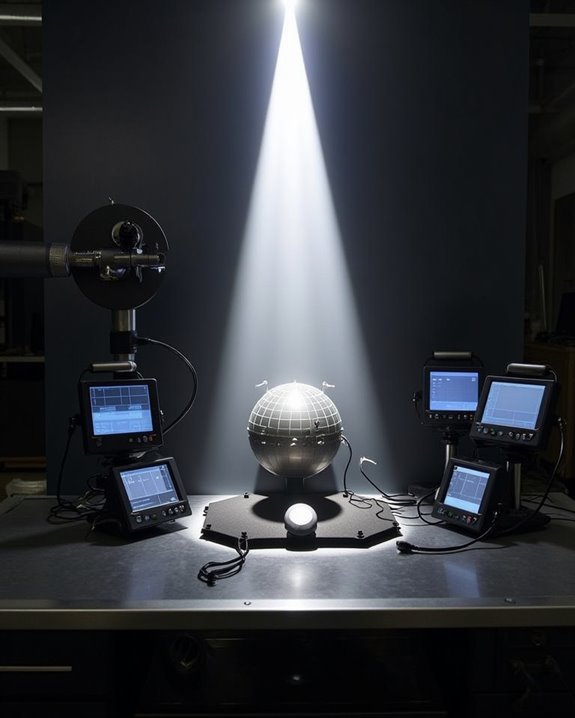
The measurement of ANSI lumens involves a specific, standardized procedure that guarantees accuracy and consistency across different projector models. During this process, technicians project a pure white image onto a standard gain 1 screen in a completely dark measurement environment, eliminating external light that could skew results.
The brightness is then measured at nine strategic points across the screen: the center, four corners, and four mid-edge positions. This methodical image calibration captures the projector’s brightness variability throughout the entire display area, not just at its brightest point. Technicians then calculate the average of these measurements to determine the final ANSI lumen rating, giving you a realistic representation of how your projector will perform in actual viewing conditions, rather than just theoretical maximum brightness. For indoor use, a minimum of 800 ANSI lumens is recommended to ensure clear and vibrant images in typical lighting environments.
The Difference Between ANSI Lumens and Other Brightness Units
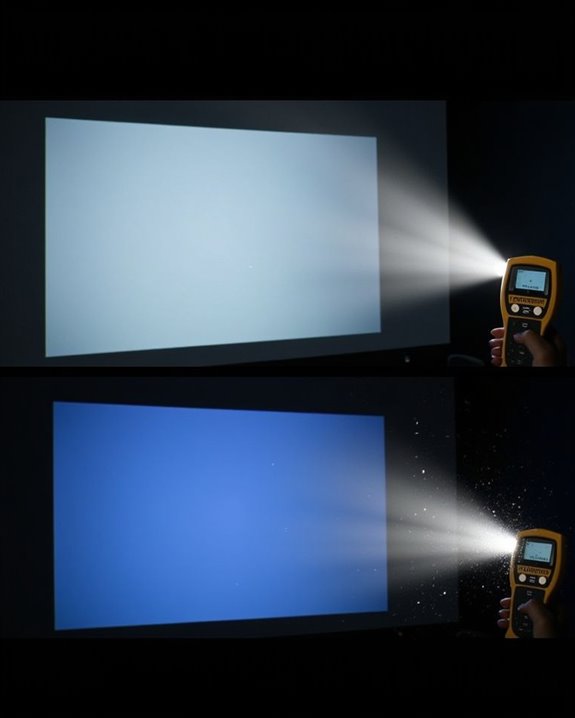
Understanding ANSI lumens becomes simpler when you compare them to other brightness measurements commonly used in display technology. Unlike lux, which measures light intensity at a specific point, ANSI lumens quantify the total light output from your projector. This distinction is essential when evaluating projector performance in various environments.
While nits and foot-lamberts measure screen brightness, ANSI lumens focus on what your projector produces. This affects both color accuracy and power consumption, as brighter projectors often require more energy but can deliver more vibrant images. ISO lumens use slightly different measurement methods but yield similar results. The most important distinction lies between ANSI and peak lumens—ANSI provides real-world values that remain consistent, while peak lumens represent initial brightness that diminishes over time.
Why ANSI Ratings Matter When Choosing a Projector
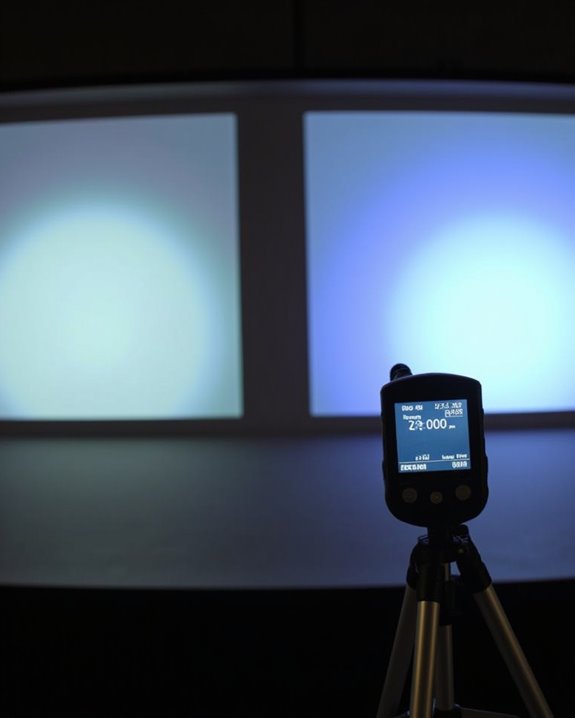
Now that you’re familiar with different brightness measurements, selecting the right projector becomes much simpler when you understand ANSI ratings. ANSI lumens provide a standardized, reliable method for measuring projector brightness, preventing manufacturers from making misleading claims about their products’ capabilities. This transparency is particularly valuable when evaluating brand reputation, as companies adhering to ANSI standards demonstrate commitment to industry accountability.
When making your purchasing decision, ANSI ratings help you determine the appropriate brightness for your specific environment and screen size, ensuring ideal viewing experiences without overpaying. Additionally, understanding ANSI standards contributes to effective projector maintenance, as you’ll have realistic expectations about light output over time. Unlike peak lumens that diminish quickly, ANSI measurements reflect performance in real-world conditions, helping you make informed, cost-effective choices that meet your projection needs.
Optimal ANSI Lumen Levels for Different Viewing Environments
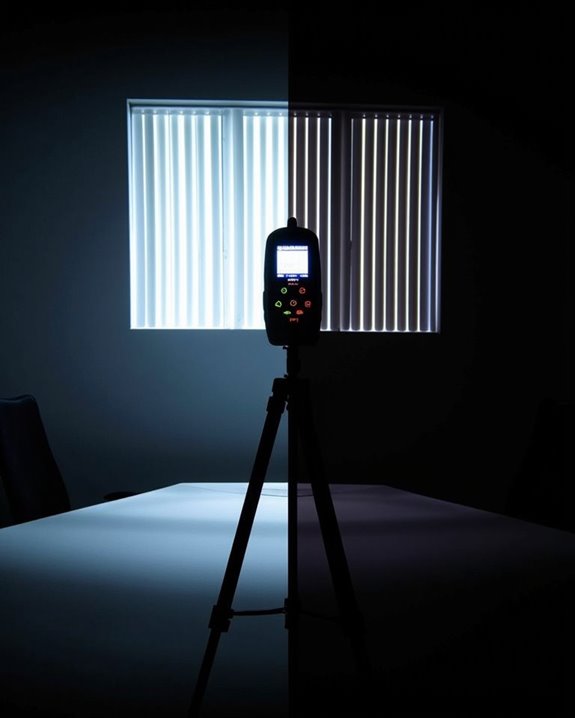
Selecting the right ANSI lumen level for your projector can profoundly impact your viewing experience, as different environments require specific brightness levels to achieve ideal image quality. For home theaters in controlled lighting, 500-1500 ANSI lumens typically suffice, while bright living rooms with windows need 2000+ lumens to combat ambient lighting interference.
Business settings demand more power—conference rooms and classrooms function best with 1500-3000 ANSI lumens, while large auditoriums require 3000-5000 lumens for clear visibility. Outdoor projections present the greatest challenge, requiring at least 2500 ANSI lumens even after sunset. Remember that screen size directly affects your lumen requirements; larger displays need considerably more brightness to maintain image clarity across the entire projection surface.
Common Misconceptions About ANSI Brightness Ratings
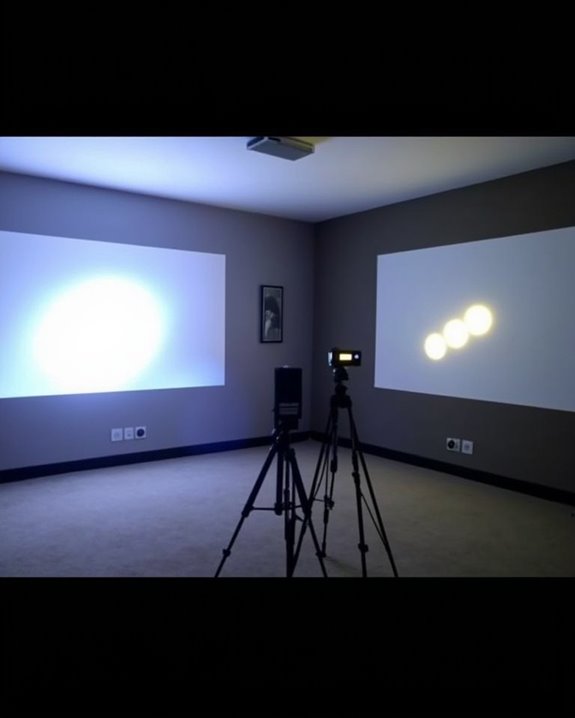
When you’re shopping for a projector, the ANSI lumen rating often stands out as the primary specification that catches your eye, yet this single number doesn’t tell the complete story about image quality. Many buyers mistakenly focus exclusively on higher lumen numbers without considering how color accuracy affects perceived brightness, leading to disappointing real-world results.
Another common misconception involves ignoring ambient light conditions in your viewing environment. A projector that performs beautifully in a pitch-dark room may appear washed out in a living room with windows. Additionally, some manufacturers exploit consumer misunderstanding by advertising brightness in non-standard units rather than true ANSI lumens, making their products appear artificially brighter on paper. When comparing projectors, remember that a 2,000-lumen model with superior color reproduction might deliver more satisfying results than a 3,000-lumen projector with poor color performance.
Frequently Asked Questions
Can ANSI Lumen Ratings Decrease Over a Projector’s Lifespan?
Yes, your projector’s ANSI lumen rating will decrease over its lifespan. Lumen degradation occurs naturally as light sources wear out, dust accumulates, and components age with usage. Regular maintenance can slow this decline.
How Do Lens Types Affect a Projector’s ANSI Lumen Output?
Picture a beam of light constricted through crystal. Your projector’s ANSI lumen output directly relates to lens quality, with higher-end lenses preserving brightness better. Additionally, projector size can influence how efficiently light passes through.
Are There ANSI Brightness Standards for 3D Projection?
No specific ANSI standards exist just for 3D projection. You’ll want higher brightness levels for 3D compatibility, as 3D glasses reduce perceived brightness. Aim for brightness consistency by choosing projectors with sufficient ANSI lumens.
Can Projector Calibration Significantly Impact ANSI Lumen Measurements?
No, proper calibration techniques generally won’t substantially alter your projector’s ANSI lumen measurements, as these are standardized brightness tests. However, calibration can improve perceived brightness and measurement accuracy in real-world viewing conditions.
Do LED Projectors Measure ANSI Lumens Differently Than Lamp-Based Models?
Like twins with different personalities, both LED and lamp-based projectors follow identical ANSI lumen measurement protocols, though LED lifespan outlasts traditional models, and display contrast is typically more consistent across an LED projector’s longer operational span.

